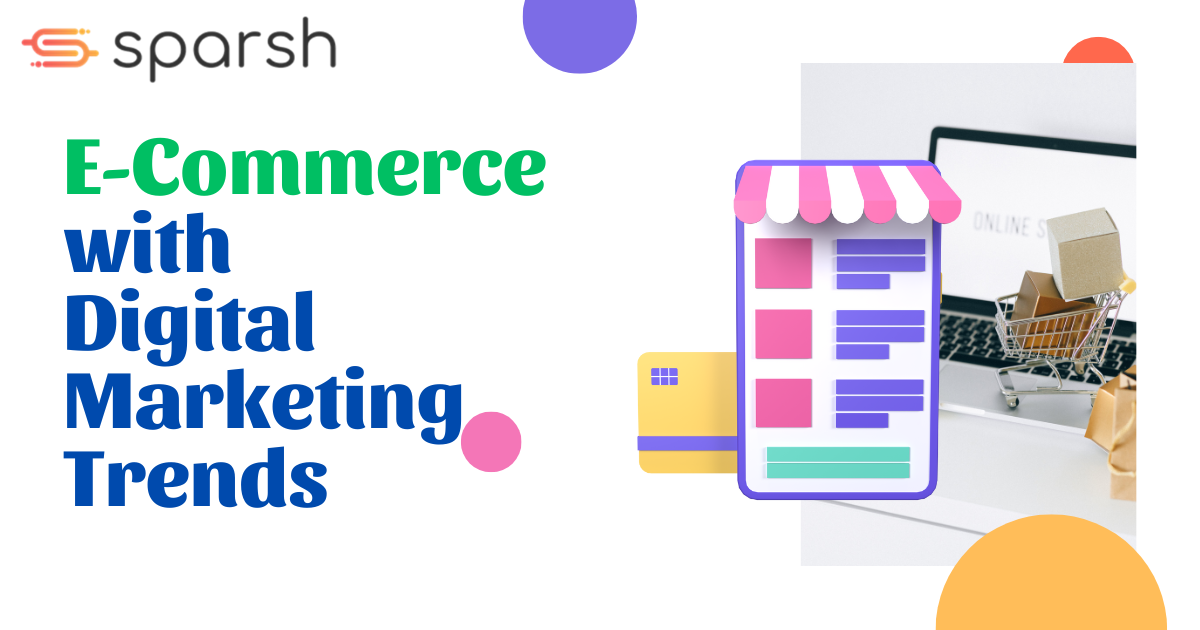Exploring the Future of E-Commerce with Emerging Digital Marketing Trends to Watch in 2025
What Is eCommerce Technology?
eCommerce technology encompasses the software and systems that empower online stores and digital sales platforms. This technology enables everything from product display and payment processing to sophisticated customer relationship management and data analytics. As the digital economy evolves, the technology underpinning e-commerce is becoming more crucial for brands aiming to expand their reach and enhance customer experiences.
10 Leading eCommerce Technology Trends for 2025
Artificial Intelligence and Machine Learning
Artificial intelligence and machine learning are revolutionizing how customers shop by creating personalized experiences based on their behaviors and preferences. These technologies predict and respond to customer needs by analyzing their activity, boosting engagement, and improving inventory management efficiency. As they continue to evolve, AI and ML are vital in developing intuitive and responsive shopping environments that are already shaping consumer trends.
Voice and Visual Search
Voice and visual search technologies are making online shopping faster and more interactive. These tools allow shoppers to use voice commands or images to find products, meeting the modern demand for quicker, more intuitive browsing. This accelerates the search process and enhances user engagement, offering a smoother shopping experience. As these technologies grow, they become essential tools for e-commerce businesses to stay competitive in their digital strategies.
AR and VR in Online Shopping
Augmented Reality (AR) and Virtual Reality (VR) are transforming online shopping by enhancing the try-before-you-buy experience. Customers can see how products look and function in a virtual environment, increasing their understanding and confidence in their purchases. As AR and VR technologies advance, they will change how customers interact with products online, making shopping more engaging and reducing return rates.
Blockchain for Transparency in E-Commerce
Blockchain technology is rapidly becoming essential in e-commerce for enhancing transparency, improving security, and building trust. It offers a secure, decentralized ledger that records transactions clearly and permanently, making it easier to verify product authenticity and history. This reduces fraud and increases trust in online shopping. As blockchain becomes more widespread, it will be a fundamental element in developing secure and trusted e-commerce platforms.
Sustainable and Ethical Shopping
The trend toward sustainable and ethical shopping is growing as consumers increasingly choose brands that align with their values of corporate responsibility. Digital platforms facilitate this shift by providing easy access to a company’s environmental and social practices. This transparency helps consumers make informed choices, favoring brands committed to sustainability and ethical methods. As awareness grows, e-commerce platforms are adapting by featuring products that meet these standards, driving the retail industry towards more responsible practices.
Omnichannel Shopping Experiences
Omnichannel strategies are simplifying how customers engage with brands across multiple platforms—online, through mobile apps, or in-store—creating a seamless and unified shopping experience. This integration ensures consistency and personalization at every touchpoint, enhancing customer satisfaction and loyalty in today’s competitive market. As businesses adopt this approach, they are better able to meet consumer expectations and improve overall shopping experiences, which is key to retaining customers.
Advanced Chatbots and Automated Marketing
Advanced chatbots and marketing automation tools are crucial for engaging customers effectively. These AI-driven technologies handle real-time interactions, provide product recommendations, and assist with purchases, offering a personalized experience akin to human interaction. They tailor communications to user behavior and preferences, enhancing relevance and timeliness. By using these tools, companies can increase customer satisfaction, conversion rates, and build strong relationships in the competitive digital marketplace.
Social Commerce
Social media platforms are transforming into live marketplaces, influencing e-commerce by integrating shopping directly into users’ feeds. This seamless experience enhances engagement and sales as companies interact with customers, where they spend much of their online time. As social commerce grows, brands are creatively merging social interaction with commercial opportunities, designing engaging and interactive shopping experiences to captivate the savvy digital consumer.
Subscription Models and Loyalty Programs
Subscription models and loyalty programs are evolving to offer more personalized value, significantly boosting customer retention and engagement. These programs use data analytics. to tailor rewards and offers to individual preferences, increasing the sense of exclusivity and value. This personalized approach not only strengthens customer relationships but also converts occasional buyers into loyal advocates, driving sustained revenue growth and giving businesses a competitive edge in the market.
Faster Delivery and Advanced Logistics
Technological advancements in logistics are revolutionizing e-commerce by dramatically reducing delivery times. Innovations like automated warehousing, drone deliveries, and optimized route planning are enhancing distribution efficiency. These improvements expedite shipping, improve accuracy, and reduce operational costs. As consumer expectations for quick and reliable delivery grow, these technologies are becoming crucial for e-commerce competitiveness and will continue to shape the future of logistics by pushing the limits of delivery speed and efficiency.
How to Pick E-Commerce Tech Trends That Are Best For Your Business
Selecting the right technology trends involves understanding your customer base and identifying the solutions that align with your brand values and business goals. Consider technologies that enhance the user experience, streamline operations, or expand your market reach. A data-driven approach involving analytics to assess customer behaviors and preferences, can guide your technology adoption strategy effectively.
Taking Advantage Of The 2025 Trends
To capitalize on these emerging trends, businesses should focus on integrating flexible technologies that can adapt to changing consumer demands and market conditions. Training teams to leverage new tools and aligning them with overall business objectives will ensure that investments in technology drive growth and competitive advantage.
Tap Into eCommerce Technology Trends With Sparsh
Sparsh Communications offers expertise in harnessing cutting-edge e-commerce technologies to propel businesses forward. With a focus on innovative solutions tailored to your unique brand needs, Sparsh helps you navigate the complexities of digital transformation. By partnering with Sparsh, you can effectively implement the latest trends, from AI-driven personalization to eco-friendly e-commerce practices, ensuring your business stays ahead in the fast-evolving digital landscape.










